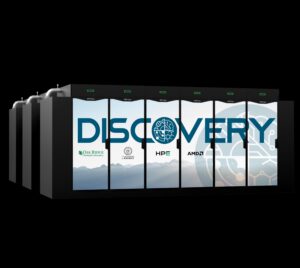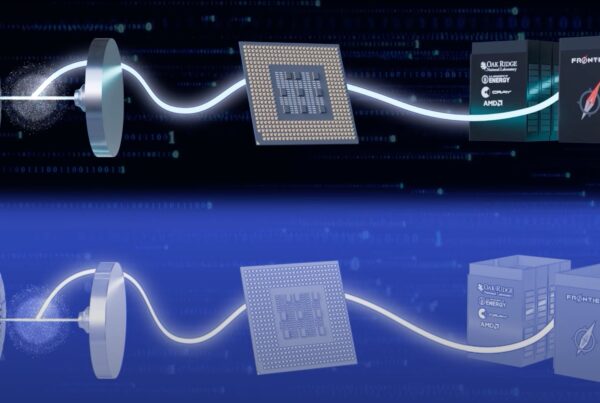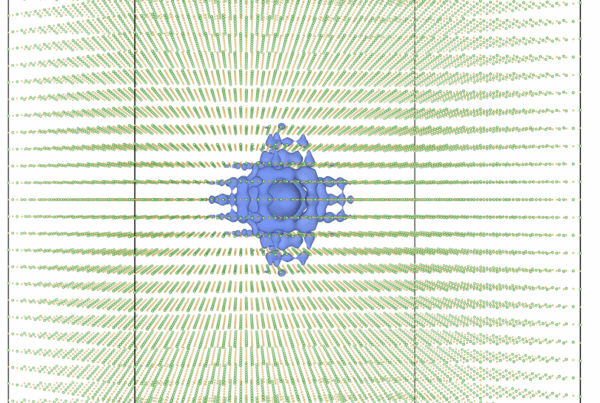The U.S. Department of Energy announced today its newest supercomputers, Discovery and Lux, at Oak Ridge National Laboratory that will expand America’s leadership in artificial intelligence for scientific computing, strengthen national security, and drive the next generation of Gold Standard Science and innovation.
“Winning the AI race requires new and creative partnerships that will bring together the brightest minds and industries American technology and science has to offer,” said U.S. Secretary of Energy Chris Wright. “That’s why the Trump administration is announcing the first example of a new commonsense approach to computing partnerships with Lux. We are also announcing, as part of a competitive procurement process, Discovery. Working with AMD and HPE, we’re bringing new capacity online faster than ever before, turning shared innovation into national strength, and proving that America leads when private-public partners build together.”
Discovery and Lux are two powerful computing systems designed to help drive new scientific discoveries using artificial intelligence. Both machines will be AMD-accelerated and built by HPE. Discovery will be led by HPE and the AMD-led Lux system will leverage the Oracle Cloud Infrastructure (OCI) as part of the Lux AI Cluster. Discovery and Lux will enable researchers to explore innovative AI-centric approaches, supporting a new wave of U.S. technological revolutions in energy, manufacturing, medicine and cybersecurity; advancing national leadership; strengthening prosperity; and improving lives.
“The Discovery and Lux systems will drive scientific innovation faster and farther than ever before,” said ORNL Director Stephen Streiffer. “ORNL’s leadership in supercomputing has dramatically shortened researchers’ time from problem to solution across a host of fields and industries. With Discovery and Lux, the integration of high-performance computing and AI promises breakthroughs at the accelerated speed and scale necessary for continued U.S. leadership in an increasingly competitive global environment.”
Discovery leads the next step in AI supercomputing

ORNL’s Discovery system will be based on the new HPE Cray Supercomputing GX5000, an AMD-powered next generation supercomputer built for the AI era. Credit: HPE
ORNL’s Discovery system will be based on the new HPE Cray Supercomputing GX5000, a next generation supercomputer built for the AI era, which is powered by a combination of upcoming next generation AMD EPYC “Venice” processors and AMD Instinct MI430X GPUs. The system will be augmented by a new Distributed Asynchronous Object Storage (DAOS)-based HPE Cray Supercomputing Storage Systems K3000, the first factory-built storage system with embedded open-source software.
“With Discovery and Lux, we are strengthening America’s foundation for innovation and accelerating progress across science, energy, and national security to advance solutions to the world’s most important and challenging problems,” said Lisa Su, chair and CEO, AMD.
Discovery’s enhanced computing speeds and bandwidth will directly translate into accomplishing more scientific discoveries faster. With Discovery’s computational engine, researchers will be able to generate and analyze data at unprecedented speeds, which will expand scientific understanding and accelerate training of AI models built for science.
Insights made possible by Discovery will help realize the full potential of many innovations, including:
- AI modeling to make nuclear energy safer, cheaper and more available
- AI-driven digital twins for precision medicine and patient health
- Aerospace design cycles shortened from years to months for faster, more fuel-efficient aircraft
Discovery will be delivered in 2028 with significantly greater performance than Frontier, ORNL’s current flagship supercomputer, across every part of the system. Discovery will continue to advance scientific discoveries via high-performance modeling and simulation integrated with AI, while charting the path to the convergence of high-performance computing (HPC), AI and quantum computing.
“We’re proud to continue our collaboration with ORNL and contribute to its legacy of AI and HPC excellence,” said Antonio Neri, HPE CEO. “Building on the groundbreaking achievements of Frontier, these new systems will drive new levels of scientific productivity, enable complex simulations, and establish new standards for sovereign AI.”
Discovery continues ORNL’s and DOE’s proven record of HPC leadership. The lab is home to the Oak Ridge Leadership Computing Facility, a DOE Office of Science user facility, which has deployed a total of seven flagship supercomputers since 2004. Each of the last four machines – Jaguar, Titan, Summit and Frontier – were recognized as the world’s fastest system of its time. These leadership-class systems support scientists in achieving cutting-edge breakthroughs and have provided unprecedented computational science capabilities for the nation.
Lux speeds up AI deployment for national priorities

The AMD-led Lux system will leverage the Oracle Cloud Infrastructure (OCI) as part of the Lux AI Cluster.
Lux will employ AMD Instinct™ MI355X GPUs, AMD EPYC™ CPUs, AMD Pensando™ advanced networking, and HPE ProLiant Compute XD685 to deliver a secure, open, and efficient AI software stack for U.S. innovation, supporting large-scale AI training and distributed inference.
“Working with the Department of Energy, Oak Ridge National Laboratory, and our partners HPE and OCI, AMD is extending our leadership in high-performance and AI computing to power the next era of U.S. scientific discovery,” said Su.
DOE’s investment in Lux reflects the partners’ trusted and proven leadership in advanced computing, including delivery of Frontier, the first supercomputer to break the exascale barrier.
UT-Battelle manages ORNL for DOE’s Office of Science, the single largest supporter of basic research in the physical sciences in the United States. The Office of Science is working to address some of the most pressing challenges of our time. For more information, please visit energy.gov/science.
The Discovery supercomputer at Oak Ridge National Laboratory, to be built by HPE and AMD will push beyond exascale and power new innovation, scientific discovery and insights. This system will combine HPC, AI and quantum computing to deliver impactful breakthroughs in precision medicine, cancer research, materials science, nuclear fusion, aerospace and more. Watch the video to learn more.






